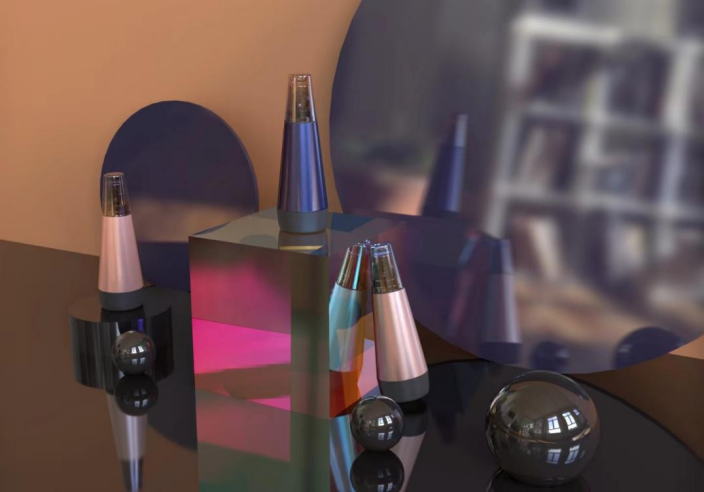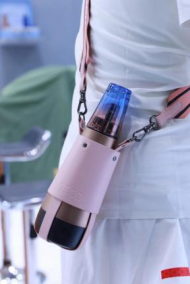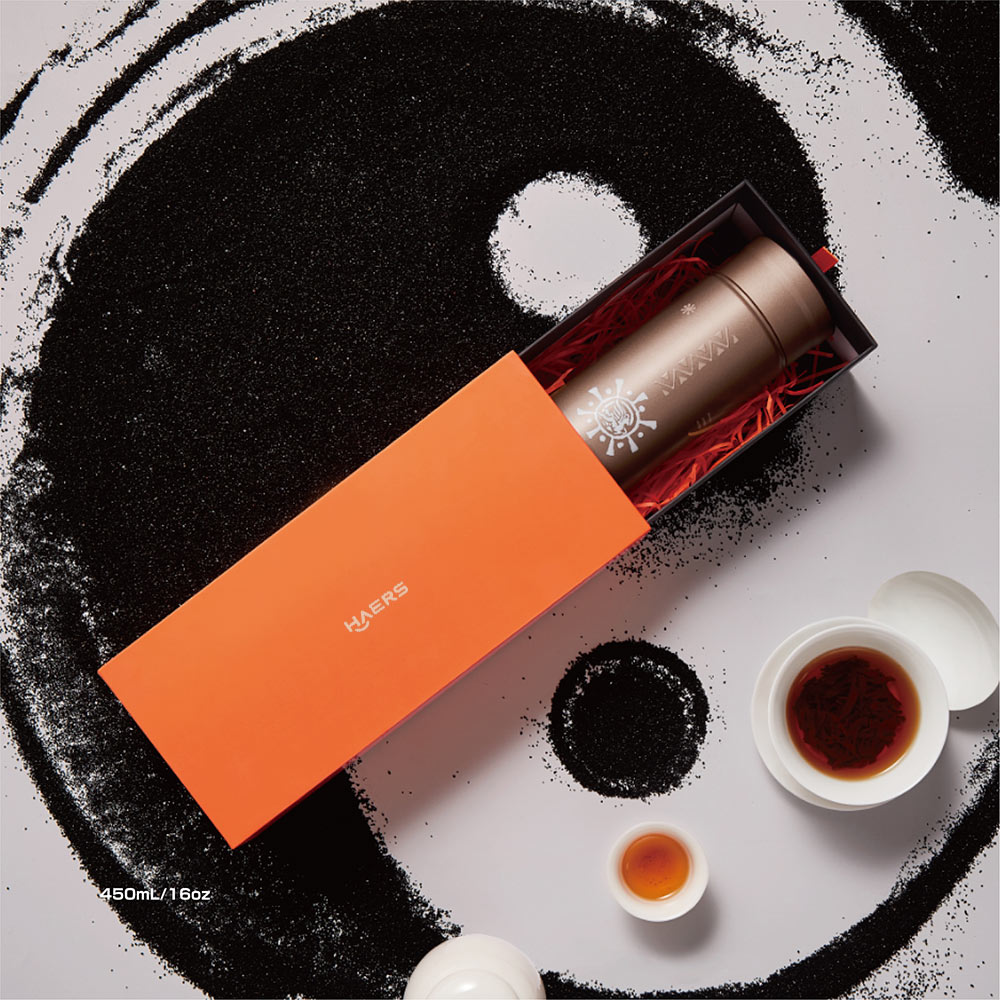Are Titanium Water Bottles Better Than Stainless Steel Tumblers?
Walk into a shopping mall, and you’ll often see Titanium water bottles priced in the there or four-digit range, standing in stark contrast to the stainless steel insulated bottles right next to them. Despite costing several times more, Titanium water bottles still manage to catch the attention of curious shoppers.

Behind this, there are some striking industry numbers: the global high-end drinkware market sees an annual growth rate of 12% for titanium products, and a well-known brand’s titanium cookware sells for three times the price of its stainless steel pans—yet it still sells out quickly.
Titanium’s impressive performance speaks for itself. It can withstand the extreme heat of rocket engines, integrate seamlessly with human bones in medical implants, and resist saltwater corrosion in deep-sea environments for decades. But how do these high-performance attributes connect to something as simple as drinking water? Is the rise of Titanium water bottles a natural step in consumer upgrading, or just a well-crafted marketing myth?
Table of Contents
ToggleWhat Is Titanium?
Titanium is a hard, silvery-white metal with a natural luster. It is the ninth most abundant metal element in the Earth’s crust, with reserves approximately 30 times greater than copper. However, its melting point is as high as 1668°C, and in a molten state, it reacts easily with oxygen and nitrogen. This means titanium must be refined in a vacuum environment. As a result, pure titanium never exists naturally in its elemental form but is found in compounds such as rutile and ilmenite.
Pure titanium typically contains 0.1% to 0.5% of impurity elements, primarily iron, carbon, nitrogen, and oxygen. Based on impurity content, industrial-grade titanium is classified into four grades, with oxygen content increasing from 0.18% to 0.40%. The solid-solution strengthening effect of oxygen increases the strength of titanium as the grade rises.
Titanium alloys are created by adding elements such as aluminum, vanadium, molybdenum, and iron to form stable α or β phase structures.
- α-type alloys offer excellent weldability and corrosion resistance.
- β-type alloys achieve higher strength through solid-solution strengthening.
- α+β-type alloys combine the advantages of both and are the most widely used titanium alloys.
What Are the Advantages of Titanium?
Titanium offers several key advantages:
- Biocompatibility – Its elastic modulus is close to that of human bones, making it ideal for implants without causing immune rejection.
- Extreme Low-Temperature Resistance – Even at -253°C (liquid hydrogen conditions), titanium maintains a tensile strength above 150 MPa and an elongation of 15%, making it the top choice for aerospace cryogenic propellant tanks.
- Thermal Insulation – With a thermal conductivity only 1/10 that of aluminum, titanium is well-suited for heat insulation structures. Additionally, its thermal expansion coefficient falls between aluminum and steel, minimizing structural deformation due to temperature changes.
- High Strength & Lightweight – Titanium has only 57% of the density of steel but offers a strength-to-weight ratio comparable to some alloy steels, meeting the weight reduction needs of aerospace applications.
- Superior Corrosion Resistance – The oxide layer on titanium’s surface effectively resists seawater and acid corrosion, extending its service life 3–5 times longer than traditional materials.

From spacecraft fuel tanks to bio-coatings for artificial hip joints, from nuclear power plant condensers to trendy portable cups, titanium is transforming material applications. In the medical field, it serves as the “invisible guardian” in heart stents and artificial joints. In outdoor gear, it becomes fire-resistant camping cookware. In the high-end consumer market, it captivates buyers with gradient-colored, gold-tinted cup designs.
With its exceptional properties, titanium is widely used in aerospace, shipbuilding, chemical and petrochemical industries, transportation, defense, marine engineering, power generation, construction, metallurgy, medical fields, sports equipment, consumer goods, and light industries.
As two major engineering metals, titanium and stainless steel have significant performance differences.
| Property | Titanium | Stainless Steel |
|---|---|---|
| Density | 4.5 g/cm³ | 7.9 g/cm³ |
| Tensile Strength | Pure titanium: 265–353 MPa, titanium alloys: 686–1176 MPa | 515 MPa |
| Yield Strength | Pure titanium: 265–353 MPa, titanium alloys: 686–1176 MPa | 205 MPa |
| Corrosion Resistance | Excellent (almost no rust in seawater and chlorine solutions) | Good (may develop pitting over time) |
| Heat Resistance | Continuous use temperature ≤600°C | Continuous use temperature ≤650°C |
| Biocompatibility | Excellent (no rejection reaction) | Moderate (nickel ions may be released, potentially causing allergies) |
| Processing Difficulty | High (requires specialized equipment and techniques) | Moderate (conventional machining is feasible) |
| Cost | Approx. 50-60 RMB/kg | Approx. 10-15 RMB/kg |
From the table above, you can see titanium stands out due to its lightweight properties, biocompatibility, and extreme corrosion resistance. This explains why it is highly favored in medical implants, deep-sea equipment, and high-end consumer goods.
On the other hand, 304 stainless steel holds its ground with heat stability, ease of processing, and cost efficiency, making it the dominant material in kitchenware and drinkware.
The choice between the two depends on specific needs—titanium is irreplaceable in extreme environments and high-tech applications, while stainless steel leads in affordability and practicality.
Titanium was once mainly used in aerospace and deep-sea exploration, but now it’s showing up in consumer goods like cookware and drinkware. So why has this “high-tech” material become part of daily life? The answer lies in its great benefits—it’s lightweight, durable, and safe—along with the growing demand for healthier and more convenient products.
So, what exactly is driving this transformation from “cutting-edge technology” to an everyday lifestyle companion?
Why Is Titanium Being Used in Consumer Goods?
1. The Rising Star in the High-End Gift Market
Titanium has made its breakthrough into consumer products, first gaining attention in the high-end gift market. From sports gear to tech gifts, its combination of lightweight properties and high strength gives products a competitive privelege.

- Outdoor & Sports Gear – Titanium enhances portability in trekking poles, water bottles, and other outdoor gear by significantly reducing weight while maintaining strength. Its scartch-resistance makes it particularly effective in rugged terrains. Titanium-alloy sports protective gear, designed with ergonomic principles, provides better protection while minimizing weight, improving the user’s experience.
- Medical & Beauty Industry – Titanium’s biocompatibility and precision machining make it invaluable in this aera. For example, titanium micro-injection needles feature fine-tip designs for precise drug delivery while minimizing tissue damage. In dental implants, titanium bases seamlessly integrate with human bone, while porous surface structures promote bone cell growth, accelerating post-surgery recovery.
- Tech Gifts – Titanium alloys are used in core components of wearable smart devices, ensuring structural strength without adding bulk, enhancing comfort. In high-end electronics, precision titanium connectors reduce size while improving reliability. Its oxidation resistance extends product lifespan, and the metal’s unique luster combined with modern finishing techniques adds a distinct premium aesthetic, making it a signature material in high-end tech gifts.
2. from High-Tech to Consumer Goods
Although titanium has long been regarded as an expensive material for high-end industries, its recent expansion into consumer products follows a unique parttern. This transition from “cutting-edge technology” to “accessible daily use” stands out from both performance advantages and evolving consumer demands in the premium market.

- Lightweight & Aesthetic Design– With a density of just 4.5 g/cm³, titanium is much lighter than stainless steel yet retains comparable strength. Advanced surface treatments (such as PVD coating) allow titanium products to display various metallic colors and textures, adding a personalized, high-end touch that meets brands’ expectations for a luxury appearance.
- Durability & Adaptability – Titanium’s superior corrosion resistance allows it to remain stable in harsh conditions. Outdoor camping cookware made from titanium withstands extreme temperature changes without deformation. In kitchens, titanium frying pans better heat transfer than iron cast and other non-stick pans.
- Health & Safety Benefits – Titanium’s biocompatibility extends beyond medical applications to kids water bottles and children’s tableware. Its natural oxide film inhibits bacterial growth, prevents dirt accumulation, and is even believed to regulate electrical currents in the body to promote blood circulation.
- Exclusivity & Marketing Value – Limited editions, craftsmanship, and premium branding help elevate titanium’s value. Its biocompatibility becomes a key selling point for “mother and baby safety”, while its self-healing oxide layer supports a “long-lasting durability” narrative. The high material cost and processing difficulty naturally create scarcity-driven marketing strategies, reinforcing its status as a premium material.
3, Better Design Freedom
New manufacturing techniques have unlocked titanium’s full potential in consumer markets.
- Seamless Molding Technology overcomes traditional metalworking limitations, allowing for ultra-thin cup walls and complex shapes, vastly expanding design possibilities.
- Advanced Surface Treatments redefine titanium’s appearance. PVD coatings enhance durability, color stability, and scratch resistance, creating distinct visual effects that elevate product aesthetics. This customizable finish makes titanium suitable for both minimalist and intricate designs, catering to different consumer preferences.
By combining cutting-edge technology and functional advantages, titanium has successfully transitioned from an elite engineering material to a coveted choice for high-end consumer products.
Is Titanium Better Than Stainless Steel ?
From a material perspective, titanium’s properties significantly outperform stainless steel—it is 43% lighter, achieves thinner walls with the same strength, and has an ion release rate only 1/4 that of stainless steel, ensuring zero risk of heavy metal leaching.
In extreme conditions, its corrosion resistance is 100 times that of 304 stainless steel, remaining pristine even after decades in seawater. These will definitly outbeat stainless steel, but does the market really choose based on data and figures alone?

Stainless Steel: The Dominant Choice for Mass Markets
Stainless steel maintains its market leadership due to its affordability and balanced performance. Most branded stainless steel tumblers are priced between $20 to $80, while Titanium water bottles typically exceed $100. This price gap defines distinct consumer segments—titanium is a symbol of premium living, while stainless steel remains the practical choice for cost-conscious consumers.
Additionally, stainless steel tumbelrs offer:
- Sufficient insulation and easy cleaning, meeting the needs of most consumers.
- Strong presence in schools, offices, and homes, where practicality outweighs premium materials.
- A well-established supply chain supporting scale production in the millions, making stainless steel tumblers widely accessible.
In contrast, Titanium water bottles remain a niche product due to high material and manufacturing costs. The raw material itself is expensive, and the complexity of processing further drives up prices. Unlike stainless steel, which benefits from mature large-scale production, titanium’s production efficiency remains limited, preventing rapid mainstream adoption.
Titanium: A High-End Niche
Titanium’s higher pricing positions it as a luxury or specialized product, catering to:
- Business professionals looking for a cup that symbolizes quality and status, marketed as a “space-grade material” with “medical-grade safety.”
- Outdoor lovers who prioritize lightweight durability and extreme corrosion resistance.
- Health-conscious consumers, such as those avoiding heavy metal exposure, especially in premium tea culture and wellness industries.
Market Strategy: A Coexisting Landscape
While stainless steel dominates mainstream markets, titanium products continues to grow within high-end segments. This coexistence reflects different consumer purchase preference:
- Mainstream markets prioritize affordability and functionality, making stainless steel the preferred option.
- Premium consumers seek differentiation and exclusivity, making titanium an aspirational product.
For brands, the choice between titanium and stainless steel is not a simple either-or decision but a strategic positioning test:
- Luxury brands can leverage titanium’s scarcity to build a “premium craftsmanship” narrative, transforming manufacturing challenges into “artisan storytelling”.
- Top brands can take advantage of stainless steel’s flexible supply chain, ensuring rapid iterations and strong customer retention.
- Packaging and branding play a crucial role in elevating titanium’s perceived value, helping justify its higher price point.
As one of the few manufacturers in China with both titanium product expertise and custom packaging capabilities, Haers has successfully collaborated with high-end tea brands and other high-end clients, offering end-to-end services from product design to packaging design. Our precision craftsmanship help brands deliver a truly differentiated unique products.
If you’re looking for OEM/ODM services for Titanium water bottles or tumblers, feel free to contact us for tailored solutions.

